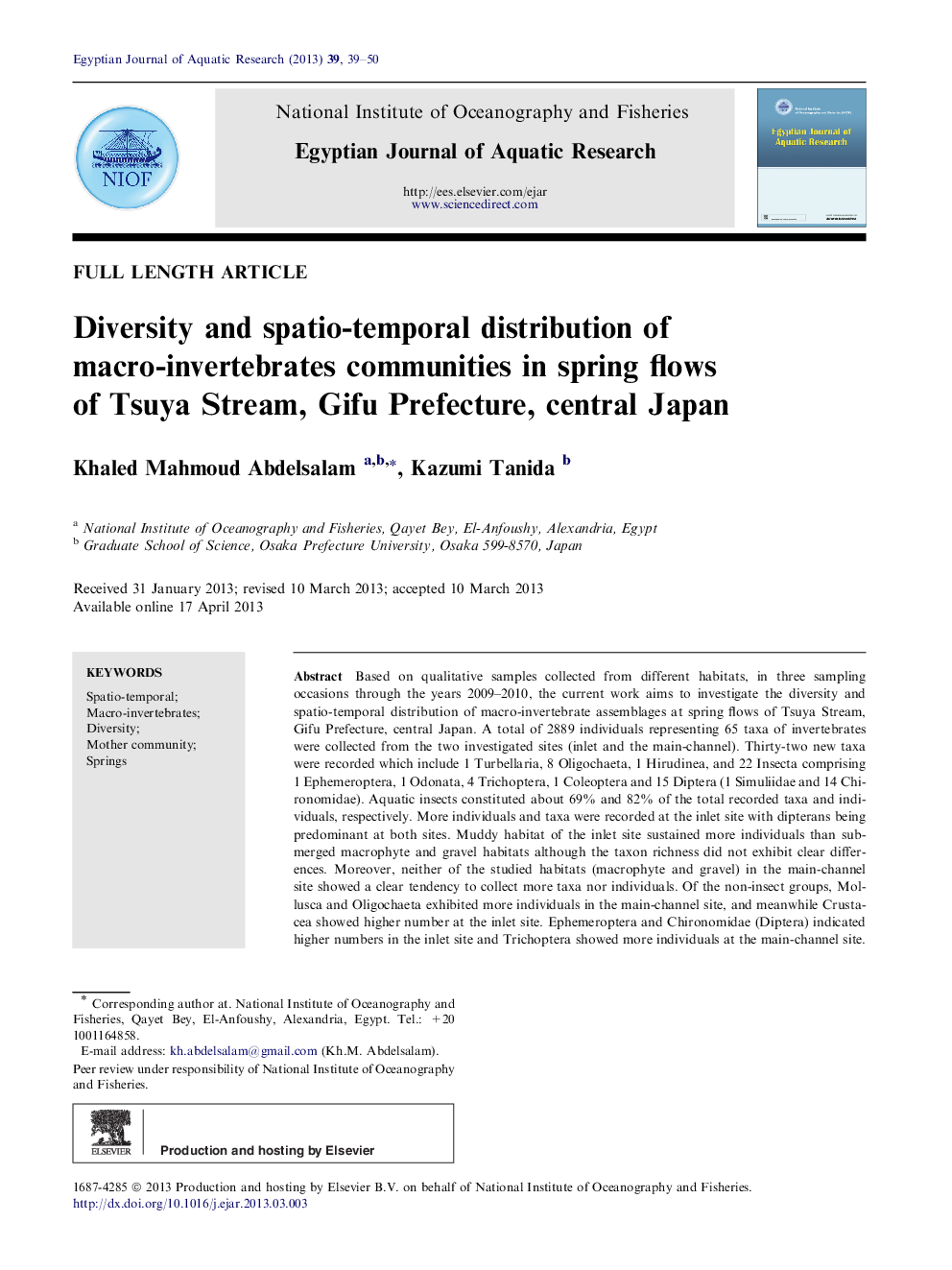| Article ID | Journal | Published Year | Pages | File Type |
|---|---|---|---|---|
| 4493236 | The Egyptian Journal of Aquatic Research | 2013 | 12 Pages |
Based on qualitative samples collected from different habitats, in three sampling occasions through the years 2009–2010, the current work aims to investigate the diversity and spatio-temporal distribution of macro-invertebrate assemblages at spring flows of Tsuya Stream, Gifu Prefecture, central Japan. A total of 2889 individuals representing 65 taxa of invertebrates were collected from the two investigated sites (inlet and the main-channel). Thirty-two new taxa were recorded which include 1 Turbellaria, 8 Oligochaeta, 1 Hirudinea, and 22 Insecta comprising 1 Ephemeroptera, 1 Odonata, 4 Trichoptera, 1 Coleoptera and 15 Diptera (1 Simuliidae and 14 Chironomidae). Aquatic insects constituted about 69% and 82% of the total recorded taxa and individuals, respectively. More individuals and taxa were recorded at the inlet site with dipterans being predominant at both sites. Muddy habitat of the inlet site sustained more individuals than submerged macrophyte and gravel habitats although the taxon richness did not exhibit clear differences. Moreover, neither of the studied habitats (macrophyte and gravel) in the main-channel site showed a clear tendency to collect more taxa nor individuals. Of the non-insect groups, Mollusca and Oligochaeta exhibited more individuals in the main-channel site, and meanwhile Crustacea showed higher number at the inlet site. Ephemeroptera and Chironomidae (Diptera) indicated higher numbers in the inlet site and Trichoptera showed more individuals at the main-channel site. The temporal distribution of macrobenthic fauna showed a narrow range of variation (range of taxon richness: 40–47, individual number: 934–1001) with more taxa in July 2010. The estimated taxon richness of the mother community by Preston and Morisita methods also revealed higher values in July 2010. However, taxa abundance curve of chironomid larvae showed a distinct pattern approximated by the Random Fraction model of community organization.
